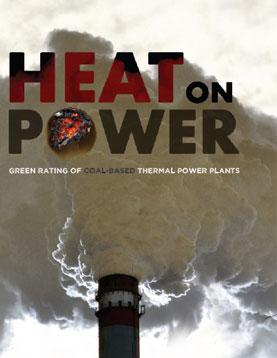Lessons from the USA
-Susan Sharma
In the 1970's there was an elevated concern about environmental pollution in major US cities. Anyone living in New York, Philadelphia, Charleston, and Boston just after the American revolution could not escape the ill-effects of expanding urbanization:
the stench of sewage in near-by rivers; the unwholesome presence of animal and human wastes underfoot; the odors of rotting food; the jangling shouts of vendors in narrow lanes; and the constant grinding of hooves and iron wagon wheels on unpaved streets.
The EPA (Environment Protection Agency) was born in December 1970 to consolidate in one agency a variety of federal research, monitoring, standard-setting and enforcement activities to ensure environmental protection. From regulating auto emissions to
banning the use of DDT; from cleaning up toxic waste to protecting the ozone layer; from increasing recycling to revitalizing inner-city brownfields, EPA's achievements have resulted in cleaner air, purer water, and better protected land.

Centre for Science and Environment in India has brought out well researched books on our pollution problems
Between 1970 and 2004, total emissions of the six major air pollutants dropped by 54 percent. This is particularly impressive when noted that the gross domestic product increased 187 percent, energy consumption increased 47 percent, and U.S. population
grew by 40 percent during the same time, proof that economic growth and environmental protection do go hand in hand.
Through land restoration efforts, 600,000 acres of contaminated land now provide ecological, economic, and recreational benefits. Just last year alone, EPA and its partners took action to restore, enhance, and protect nearly 830,000 acres of wetlands.
Oikos India has been working on degraded soil for years
In the enforcement area, EPA since 1995 has received commitments from industry to spend more than $35 billion on environmental improvements, reducing more than 10 billion pounds of pollutants. While Earth Day, 1970, launched
the idea of environmentalism in its present sense, the realization of the value of wilderness and an appreciation of the consequences of its destruction dates back several centuries in America.
The Soil Conservation Service, founded in 1935, applied scientific practices to reduce the erosion of agricultural land. The depletion of animal life received recognition in establishing a fund for state fish and wildlife programs from the proceeds of
federal taxes on hunting and fishing equipment.
The definition of wilderness as an immense natural storehouse, subject to human management, changed after the Second World War.
The concept of ecology--which valued aesthetics and biology over efficiency and commerce--began to penetrate the public mind.
In the process of transforming ecology from dispassionate science to activist creed, Carson (Rachel Carson's 1962 classic Silent Spring) unwittingly launched the modern idea of environmentalism: a political movement which demanded the state not only preserve
the Earth, but act to regulate and punish those who polluted it.
Community-based Conflict Management (CBCM) by Wildlife Research and Conservation Society, Pune